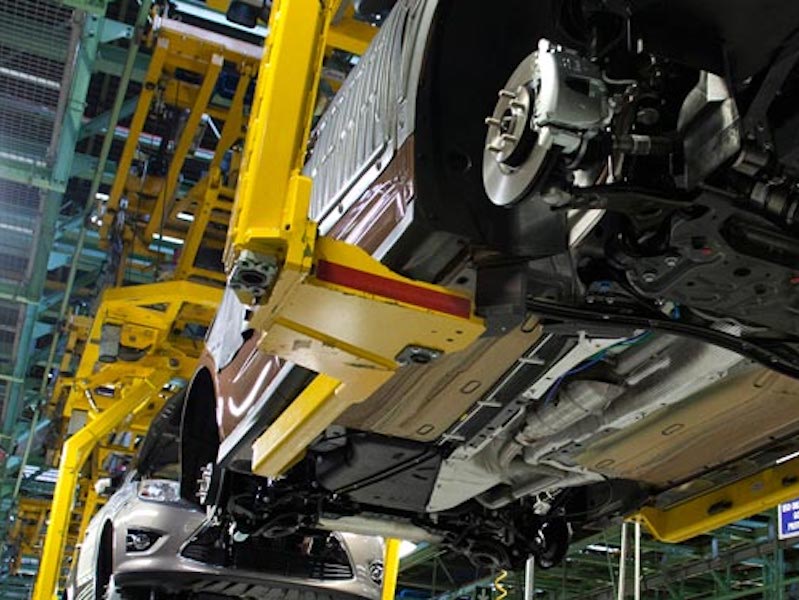The transition from internal combustion to battery electric vehicles (BEV) brings along new requirements and properties for corrosion protection.
 Dr. Karsten LessmannNonetheless, there are sufficient, inexpensive, and easily applicable corrosion protection solutions with proven effectiveness.
Dr. Karsten LessmannNonetheless, there are sufficient, inexpensive, and easily applicable corrosion protection solutions with proven effectiveness.
Battery electric vehicles have three major construction elements that are relevant in regards to corrosion protection: car body, battery frame, and chassis components, i.e., subframes.
All three elements have the following requirements:
- Solvent-free.
- Slow flame propagation.
- Long-term flexibility.
- Strong sealing against humidity.
- Stonechip and corrosion protection of underbody, ideally through two-part systems (primer and stone-chip, ecoat and stone-chip).
- Multimetal protection.
- Cold process, no higher temperatures allowed/needed because of battery damage and energy-saving.
Among these requirements, slow flame propagation and strong sealing against humidity are the most important when considering the protection of a battery. The intrusion of water inside a battery cell escalates the risk of malfunction. In a case of a malfunction, the battery easily gets temperatures over 1000°C leading to a potential fire, whereas the passengers need to have sufficient time to leave/escape the car.
Here slow flame propagation plays the most important role.
 Battery Frame Protection
Battery Frame Protection
- The main focus is the exclusion of any kind of moisture inside the cell modules (risk of short circuit, malfunction, or even self-ignition through overheating).
- Fix points like screws; welding points need extra corrosion protection.
- Crevices need an additional, flexible, hydrophobic protection to prevent excessive water collection, which is not guaranteed through a seal/gasket alone.
- Corrosion in the underbody areas due to condensation and stone chipping
- The connection points to the car body, and the chassis need extra protection
Depending on the requirements, the film's appearance is different:
- Longterm flexible, sealing, excellent corrosion protection. (Image 1)
- A flexible film with flange and crevice protection for the internal structures. (Image 2)
- Thick film stone-chip protection, black colored for underbody parts. (Image 3)
 Carbody Protection
Carbody Protection
Because of the new design of BEVs (battery frame instead a front combustion engine), the entire car body structure has changed to allow crash zone protection:
- Compact lower structures because of reinforced load-bearing capacity.
- Presence of more cavities in crash-relevant areas like rocker panels.
- Reinforced contact area body & battery frame.
- Different support structures.
Challenges for corrosion protection:
- E-coat alone is not able to get to all corrosion-relevant areas.
- Multimaterial design increases the risk of galvanic corrosion in the contact areas.
- Less ventilated areas enable water condensation.
- Residues like dust and scaling cannot be removed out of the cavities.
The material of choice for the corrosion protection of these critical internal structures, which is already in use for decades, is a water-based cavity wax that is airdrying and multi-material compatible. The system seals flanges, crevices, and contact areas (Image 4)
Since these areas are not easily accessible, the process of development of a cavity wax is challenging because, for validation, a car body needs to be opened and/or inspected through endoscopic evaluation. Much more cost-efficient and less time-consuming is the validation based on CAD Data and numerical simulation (Digital Engineering). The reliability of this simulation is >95% and allows for efficient process development.
Corrosion Protection of Propulsion/Chassis Parts Like Subframes
The corrosion protection of the subframes is a combination of protection of the internal structures and a stonechip protection of the strained external areas. Again the material of choice for the internal areas is the water-based cavity wax which is easily applicable with optimized penetration and no risk of dripping.
The stonechip protection for the outside areas is provided by a water-based, black anti-chip protection. This airdrying material supports the ecoat in anti-chip protection. Ecoat alone has a very limited stonechip resistance.
Dr. Karsten Lessmann is Director of Research and Development at Pfinder. Please visit www.pfinder.com



































